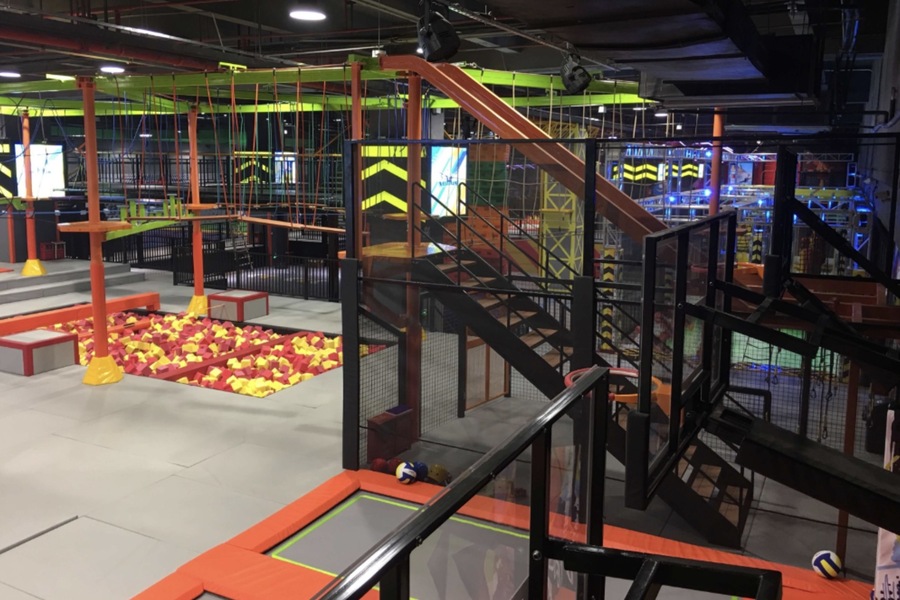Indoor playgrounds have become essential spaces for children’s development, offering a controlled environment where they can engage in physical activity, interact with peers, and grow emotionally. However, the needs of children vary significantly as they progress from toddlers to teens. This article explores how indoor playgrounds evolve with age, adapting their design, features, and activities to accommodate different developmental stages. With a focus on Dubai and the UAE, where the hot climate restricts outdoor play for much of the year, indoor playgrounds play a crucial role in providing safe and stimulating spaces for children of all ages.
Content of Page
Playgrounds for Toddlers: Safe Exploration
For toddlers, indoor playgrounds are designed with safety and sensory engagement as the primary focus. At this stage, children are just beginning to develop motor skills and explore their environment. Soft surfaces, low-height play structures, and padded floors ensure that toddlers can move freely without the risk of serious injury. Activities that stimulate their senses, such as colorful play equipment, interactive walls, and textures, are integral to supporting their cognitive development. Play areas are often segregated for toddlers, ensuring they have a space suited to their physical limitations and emotional needs. In Dubai, where families often seek indoor alternatives to outdoor play, these spaces offer a safe and controlled environment for young children to learn through play.
Encouraging Physical Development in Preschoolers
As children move into the preschool years, they begin to gain more control over their movements and are eager to test their physical abilities. Indoor playgrounds for preschoolers often feature climbing frames, small slides, and obstacle courses that encourage balance, coordination, and muscle strength. At this stage, social interaction becomes increasingly important, and playgrounds offer opportunities for children to engage in group play, fostering early social skills such as sharing, communication, and cooperation. In the UAE, playgrounds frequently incorporate multicultural elements, providing a space where children from different backgrounds can learn to interact and play together, reflecting the region’s diverse population.
Structured Play for School-Age Children
By the time children reach school age, their cognitive abilities and physical coordination have advanced significantly. Indoor playgrounds evolve to meet these new needs by introducing more complex play structures, such as rope courses, climbing walls, and mazes. These features challenge children’s problem-solving skills while promoting physical fitness. Additionally, role-playing zones, such as miniature kitchens or construction areas, stimulate imaginative play, helping children develop creativity and problem-solving abilities. In Dubai, many indoor playgrounds cater to the needs of school-age children by incorporating educational themes and elements, blending learning with play in a seamless way that aligns with the region’s focus on holistic child development.

Social Development and Team Play for Preteens
Preteens, typically ranging from ages 9 to 12, have more advanced social skills and a greater need for peer interaction. At this age, indoor playgrounds shift their focus from individual play to team-based activities. Facilities often include sports-related features such as basketball courts, mini-soccer fields, and even obstacle courses that require teamwork and collaboration. These elements not only support physical activity but also teach important life skills like leadership, cooperation, and strategy. In the UAE, indoor playgrounds catering to preteens frequently feature activities that promote social bonding, helping children build relationships with peers from different cultural backgrounds, a key aspect of growing up in a diverse region.
Catering to the Needs of Teens
Indoor playgrounds for teenagers must strike a balance between providing physical challenges and offering social spaces. Teens seek more independence and tend to gravitate toward activities that test their physical abilities and allow for social interaction. Skate parks, trampoline areas, and adventure courses often appeal to this age group, offering a mix of fun and fitness. Additionally, tech-based experiences such as virtual reality (VR) zones and interactive gaming areas are becoming increasingly popular. These areas not only provide entertainment but also foster cognitive skills and strategic thinking. In Dubai, where teenagers have limited outdoor options due to extreme weather, indoor playgrounds provide an essential venue for both physical activity and socializing, keeping teens engaged and active in a safe environment.
Age-Appropriate Safety Features
As playgrounds evolve to accommodate children from toddlers to teens, safety remains a top priority. Younger children require more padding, softer surfaces, and low-level play equipment to minimize the risk of injury. As children grow older, playgrounds introduce more challenging equipment, but safety standards remain stringent. In the UAE, government regulations ensure that all indoor playgrounds meet international safety standards, which include routine inspections and maintenance checks. For teens, where physical challenges like climbing walls and trampolines are more common, additional safety measures such as harnesses and spotters are often implemented. These precautions ensure that children of all ages can engage in age-appropriate play safely.
Indoor Playgrounds as Social Hubs
Indoor playgrounds serve not only as physical spaces for exercise and play but also as important social hubs for children of all ages. For younger children, these spaces offer opportunities for supervised social interaction in a controlled environment. As children grow older, indoor playgrounds provide a venue for them to meet friends and engage in team-based activities. In Dubai and the UAE, where community life often revolves around shopping malls and indoor recreation due to the hot climate, these playgrounds become vital spaces for socialization. The integration of café spaces and seating areas allows parents to observe while children socialize, creating an environment that supports family bonding.

Addressing Diverse Cultural Needs
One of the defining features of children’s indoor playgrounds in Dubai and the UAE is their ability to cater to a diverse population. With families from around the world living in the region, playgrounds must be designed to accommodate different cultural preferences and social norms. For instance, some playgrounds offer gender-segregated play areas for older children, respecting cultural practices while still encouraging social interaction. Additionally, multilingual signage and staff trained in various languages ensure that all families feel welcome and included. This focus on inclusivity allows playgrounds to serve as a unifying space for children from different cultural backgrounds, fostering a sense of community and shared experience.
Supporting Developmental Milestones
Indoor playgrounds play a critical role in supporting the developmental milestones of children as they grow. For toddlers, the focus is on motor skills and sensory exploration, while preschoolers engage in activities that encourage coordination and early social skills. As children reach school age, the playground environment shifts to support cognitive development through problem-solving activities and imaginative play. For preteens and teens, physical fitness, team-based challenges, and social interaction become key areas of focus. In Dubai and the UAE, where indoor spaces are often the primary venue for play, indoor playgrounds are designed to support each stage of development, helping children reach their full potential.
Conclusion
Indoor playgrounds must evolve to accommodate the changing demands and interests of children as they transition from toddlers to adolescents. These facilities provide a safe, engaging, and inclusive environment for children of all ages in Dubai and the UAE, where indoor recreational spaces are essential due to the climate. Indoor playgrounds are intended to facilitate physical, cognitive, and social development at each developmental stage, from soft play areas for toddlers to digital experiences and adventure courses for teenagers. These facilities foster the development of the skills necessary to succeed in the contemporary world by offering age-appropriate activities and spaces, all within a secure and regulated environment.

